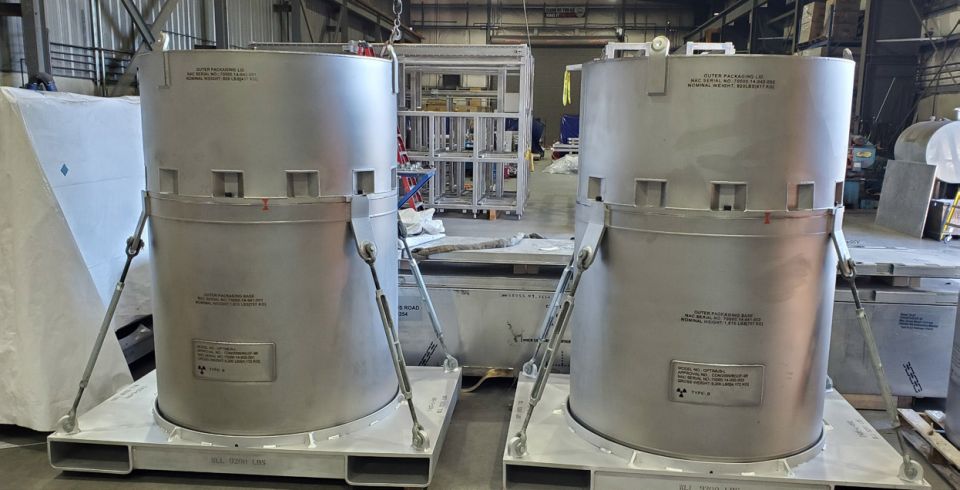BWXT will return in mid 2015
On November 5, the day before a scheduled quarterly conference call with investors and analysts, Babcock & Wilcox (NYSE:BWC) announced that it was splitting into two separate publicly traded companies.
One of the companies will retain the Babcock and Wilcox (B&W) brand and will include the business segment known as the Power Generation Group.
That company will continue to manufacture large heat exchangers and specialty pollution control components for combustion steam plants heated by coal, waste, biomass, and gas turbine exhaust. B&W will have a projected 2015 revenue of approximately $1.7 billion. Jim Ferland, who came to B&W in April 2012 after a two-day stint as chief executive officer of Westinghouse, will continue to run that substantially smaller company.
According to statements made during the November 6 quarterly conference call, B&W will be focusing on the international market for most of its new projects. It will continue earning about 50 percent of its revenue in the aftermarket servicing existing installations, much of which is in the United States.
Ferland described how the new company expected to be able to increase its operating margins by making more of its products and performing more of its engineering via Thermax Babcock & Wilcox Energy Solutions, a joint venture that opened a new fabrication plant in India last January. He emphasized that the company sees growth opportunities but will not chase low margin contracts just to increase revenue.
Though no layoffs have been announced for U.S. facilities, Ferland also mentioned that the company intended to maintain a relatively constant employee count of approximately 6,300 people. As work shifts to the new facility in India, its employee count will grow. There is only one way to keep the total constant: the number of U.S. employees will have to decrease.
Pure play nuclear
The second company will include all of B&W's nuclear-focused business units and will revive a familiar name, BWX Technologies (BWXT). BWXT will establish its headquarters in Lynchburg, Va., home to facilities and offices that employ more than half of the company's 4,700 employees.
Company spokeswoman Aimee Mills said that selecting a specific headquarters location will be part of the six-month planning process.
John Fees, who is the current non-executive chairman of B&W and has worked for the company since before it was acquired by McDermott in 1978, will become the chairman of BWXT. Peyton (Sandy) Baker, also a long-time employee and current head of the government and nuclear operations group, will be the company CEO.
From the outside, this new alignment looks a little like a divorce of a long-established marriage due to growing mutual incompatibilities.
The activist investors who began taking large positions in B&W stock about a year ago have apparently determined that the company will be worth more by having two focused management teams working in areas of the energy industry that have some similar engineering needs-but function in entirely different regulatory environments and appeal to different types of investors.
It should free up the BWXT marketing department to emphasize the clean energy advantages of atomic fission-both publicly and politically-without worrying about offending or disadvantaging a sister division that is still tied to coal.
Each new company should appeal to investors with different goals for particular financial performance and product offerings. For example, an investor who believes that clean energy has better potential for growth than coal or biomass can now choose a pure play in nuclear instead of a mixed coal and nuclear company.
Custody of mPower
During the conference call, there were several questions about the fate of the mPower small modular reactor project. Company leaders stated that they were still interested in the project, and that they were diligently working on a design certification application within the constraints of the current $15 million per year project budget.
They are still working with the Department of Energy to determine how the matching funds it awarded to assist with the engineering and design certification effort will be best used and whether there will be additional funds provided.
Only a portion of the initial award has actually been appropriated and distributed to the company.
The mPower project will still be able to take advantage of the synergies provided by the existing manufacturing facilities and engineering skills associated with producing the specialized components required in nuclear power plants. All of those units of B&W are going to be a part of BWXT.
The Nuclear Fuel Services subsidiary, as well as the various subsidiaries, joint ventures and limited liability companies created for Department of Energy cleanup work, will be housed within the new BWXT, too.
Acquisition bait?
Though Fees and Ferland repeatedly stated that neither company is for sale, it is apparent that each of the two new companies could be an attractive target for a certain type of conglomerate.
BWXT might appeal to a major defense contractor seeking some commercial diversification and the growth potential of the mPower project if design certification can be completed, while B&W operates in the same market as Foster-Wheeler and Alstom, both of which are currently being acquired.
Knowledgeable sources are optimistic about the prospects for BWXT to flourish under its new, focused management. The selected leaders are familiar and respected. Fees and Baker have deep expertise in creating and leading teams that provide the expected quality and level of service to both government and commercial nuclear customers.
They recognize the future potential for the mPower project and for continued growth in providing nuclear-related technical services and exceptionally high-quality fuel and other components. They know that they are in a business that cannot succeed with a cost-reduction, outsource-to-India mindset. Unfortunately for the current employees of the mPower project, the cost-cutter mindset appears to have at least another six months of dominance.
The road to success for BWXT will be growing revenue by meeting customer expectations and by providing differentiated products that can demand higher margins because they are more productive than the competition.
Of course, like any divorce, there will be costs associated with the process of splitting.
The lawyers will get their share, the auditors will get their share, and the branding companies that produce signs, sales literature, and stationary will get theirs. The company estimates that there will be a one time cost of $45 million-$55 million associated with the split.
It also recognizes that there will be an ongoing cost associated with having two separate management teams, two separate auditors, a different kind of insurance program, and two separate headquarters.
This split should be fairly equitable and non-contentious. There are few physical assets that are currently shared between groups that will end up in "the other" part of the company, and there already appears to be a mutual understanding of who will take care of each of the children.
The market's reaction to the announcement has been cautiously positive.
Note: A version of the above first appeared in the November 13, 2014, edition of Fuel Cycle Week. It is reprinted here with permission.




